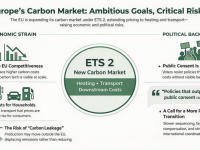In this new episode of Hedging with Jorge, we continue our journey through the world of hedging strategies, this time focusing on call options and how they form the foundation of a zero-cost collar strategy.
On popular demand, Jorge’s second edition of Aluminium and Other Base Metals: Understanding Risk Management and Hedging starts August 26, 2025. Register now: LINK
Just like an insurance policy for your car or house, options provide protection against unexpected risks. But instead of protecting physical assets, they safeguard your business from price volatility in the aluminum market.
Revisiting the concept of a call option
Before we dive into structures like the zero-cost collar, let’s refresh the basics of a call option.
A call option gives the buyer the right, but not the obligation, to purchase aluminum at a predetermined strike price on the expiry date. To acquire this right, you pay a premium. At maturity, you can decide whether to exercise the option (if it’s profitable) or let it expire.
The strike price is essentially the “level of protection” you choose, similar to deciding how much coverage you want when buying car insurance.
An example with aluminum prices
Imagine the market price of aluminum for December delivery stands at $2,625/tonne. Here’s how different strike price choices impact your premium:
- At-the-money call (strike $2,625)
- Premium: $102
Offers full protection starting at the current market price.
- Out-of-the-money call (strike $2,675)
- Premium: $80
You accept a $50 risk, but save $22 on premium costs.
- Further out-of-the-money call (strike $2,725)
- Premium: $62
You take on $100 risk, lowering the cost of protection further.
This works exactly like insurance with a deductible: the more risk you are willing to bear, the lower your premium.
Why buy a call option?
Let’s put this into a real-world aluminum business context.
Suppose you’re purchasing ingots to melt into a secondary alloy. Since the alloy price is floating, you face uncertainty in December. By purchasing a call option, you hedge against rising aluminum prices, ensuring your costs don’t spiral out of control.
In essence, you’re paying a premium today to protect your business from unfavorable price movements tomorrow.
Preparing for the zero-cost collar
Now that we understand call options and how strike price choices affect costs, the next step is to explore how to finance these premiums. That’s where the zero-cost collar comes in a strategy that allows you to set up a range of protection without any upfront cost.
Final thoughts
The lesson from today’s session is simple: the strike price defines your balance between cost and protection. Like insurance deductibles, higher risk tolerance reduces your premium but exposes you to part of the market movement.
Stay tuned for the next blog of Hedging with Jorge, where we’ll build on this foundation and construct a zero-cost collar to protect aluminum buyers in volatile markets.














